The Wonderful World of Wreck Diving
Exploring the remnants of sunken ships and planes on the seafloor is an experience unlike any other, so it’s no wonder that wreck diving continues to increase in popularity. Whether it’s a wreck that has been purpose-sunk to serve as an artificial reef or one that met with some natural tragedy, most wrecks bring with them a mystique that excites even seasoned divers. Wrecks can be found almost anywhere recreational diving is done and wrecks in virtually every shape, size and depth.
Many rec-friendly wrecks are teeming with life: Beautiful corals in every color, schooling fish (also in every color), eels, goliath grouper, rays … the list goes on and on. You often hear people say they love diving because “you never know what you’ll see.” When it comes to wreck diving, truer words were never spoken.
The U.S.S. Kittiwake is the quintessential wreck dive: World-class diving with a world-class reputation to match. Sunk in 2011 as an artificial reef off Grand Cayman after a storied military career, the Kittiwake has been featured on countless “Top 10 best dives” lists, appeared on the cover of multiple dive publications, and attracts divers to Grand Cayman year after year. Only 64 feet at it’s deepest point, the Kittiwake and the crystal-water surrounding it cater to all levels of divers. Photographers find it a favorite site due to the great visibility and ample ambient light.
Safety is paramount with any dive, but when wreck diving there are some simple tips to keep in mind:
Know your wreck: Do your homework before you dive a wreck. Wrecks have exciting — and sometimes tragic — histories, and most have a couple of “can’t miss” features. When possible, map it out and have a plan. Using the standard “rule of thirds,” make sure to use 1/3 of your gas to see the best part of the wreck!
Good buoyancy is a must: Whether diving over the deck of a wreck or penetrating deep inside, buoyancy will keep you from stirring up silt or bumping against the vessel in tighter spaces.
Safety first: Using lines and reels, especially in penetration situations, can make for a safer, more enjoyable dive. Take two fully functioning dive lights — in case one fails, you’ll have a backup.
If you have limited experience diving wrecks, you can better prepare yourself by taking the PADI Wreck Specialty course. This course covers the wreck specialty from reviewing guidelines for researching wrecks to potentially earning credit toward your Advanced Open Water certification through your first wreck dive.
In the “Encyclopedia of Recreational Diving”, there are four “Meccas” of wreck diving recognized: (1) Chuuk (Truk) Lagoon in Micronesia; (2) Scapa Flow, Orkney Islands, Scotland; (3) Outer Banks of North Carolina (also known as the “Graveyard of the Atlantic”); and (4) the Great Lakes. We are truly fortunate to have two of these four “meccas” right here in the United States. Other states — from Alabama to Wisconsin — also boast great wrecks, so chances are there is a site not far from you — all you have to do is jump in and get “wrecked” for yourself!
More Underwater Photography from Craig Dietrich:
Scuba Diving with Sea Turtles | Dive Down Under! | The Beauty of Blue Heron Bridge
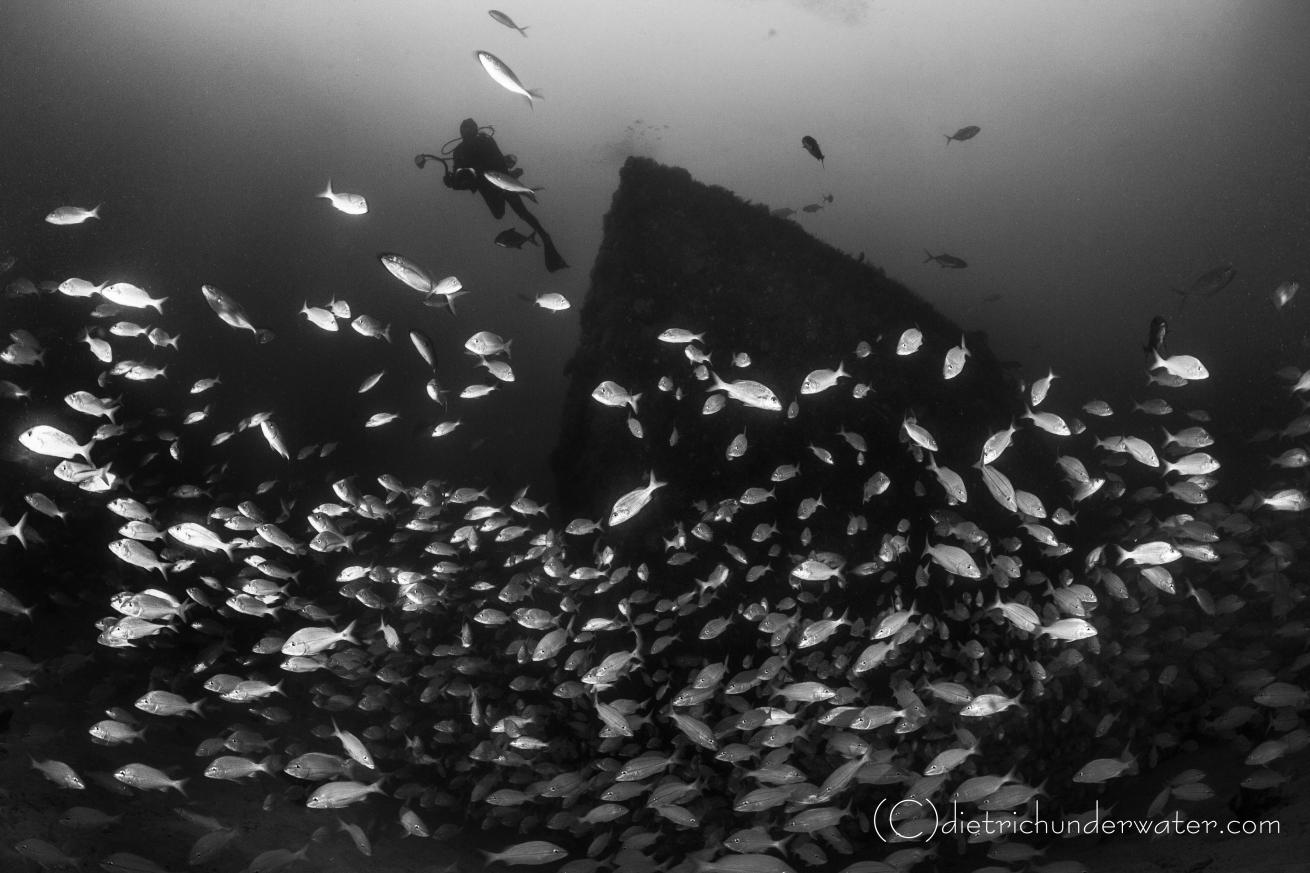
Craig DietrichWrecks attract fish and photographers alike.
Exploring the remnants of sunken ships and planes on the seafloor is an experience unlike any other, so it’s no wonder that wreck diving continues to increase in popularity. Whether it’s a wreck that has been purpose-sunk to serve as an artificial reef or one that met with some natural tragedy, most wrecks bring with them a mystique that excites even seasoned divers. Wrecks can be found almost anywhere recreational diving is done and wrecks in virtually every shape, size and depth.
Many rec-friendly wrecks are teeming with life: Beautiful corals in every color, schooling fish (also in every color), eels, goliath grouper, rays … the list goes on and on. You often hear people say they love diving because “you never know what you’ll see.” When it comes to wreck diving, truer words were never spoken.
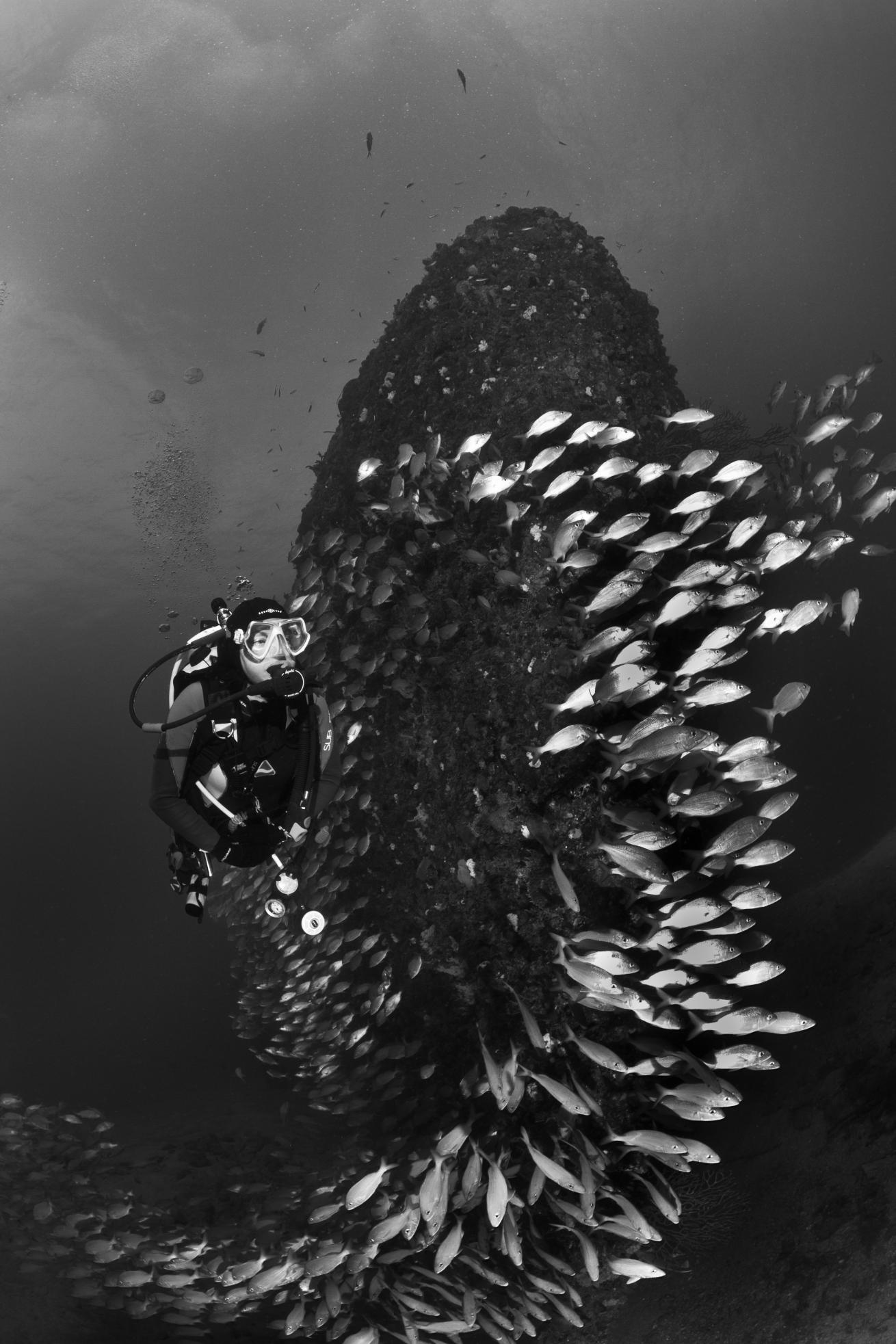
Craig DietrichA diver swims through a school of fish on a South Florida wreck.
The U.S.S. Kittiwake is the quintessential wreck dive: World-class diving with a world-class reputation to match. Sunk in 2011 as an artificial reef off Grand Cayman after a storied military career, the Kittiwake has been featured on countless “Top 10 best dives” lists, appeared on the cover of multiple dive publications, and attracts divers to Grand Cayman year after year. Only 64 feet at it’s deepest point, the Kittiwake and the crystal-water surrounding it cater to all levels of divers. Photographers find it a favorite site due to the great visibility and ample ambient light.
Safety is paramount with any dive, but when wreck diving there are some simple tips to keep in mind:
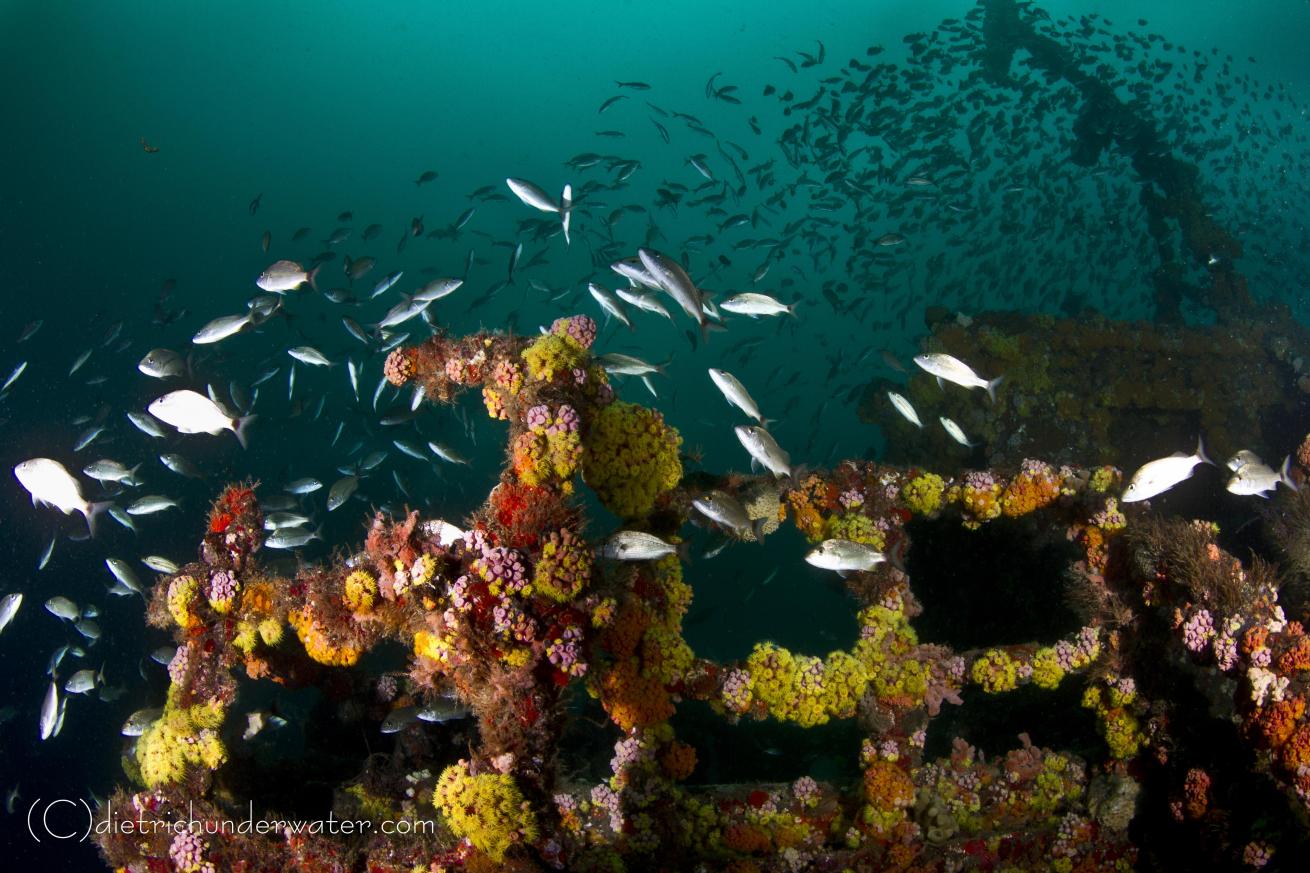
Craig DietrichA wreck alive with life.
Know your wreck: Do your homework before you dive a wreck. Wrecks have exciting — and sometimes tragic — histories, and most have a couple of “can’t miss” features. When possible, map it out and have a plan. Using the standard “rule of thirds,” make sure to use 1/3 of your gas to see the best part of the wreck!
Good buoyancy is a must: Whether diving over the deck of a wreck or penetrating deep inside, buoyancy will keep you from stirring up silt or bumping against the vessel in tighter spaces.
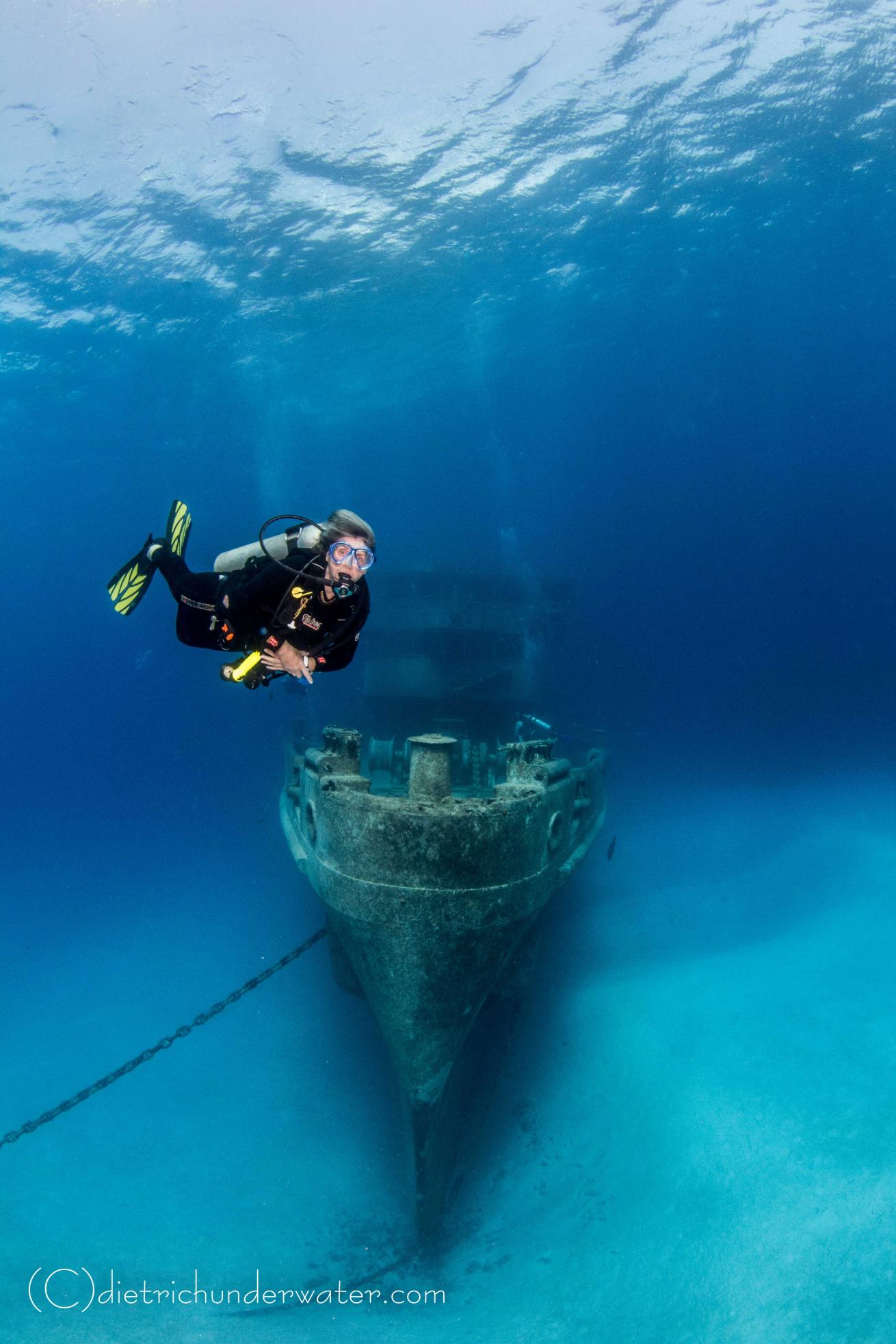
Craig DietrichEditor-in-Chief Patricia Wuest dives the Kittiwake.
Safety first: Using lines and reels, especially in penetration situations, can make for a safer, more enjoyable dive. Take two fully functioning dive lights — in case one fails, you’ll have a backup.
If you have limited experience diving wrecks, you can better prepare yourself by taking the PADI Wreck Specialty course. This course covers the wreck specialty from reviewing guidelines for researching wrecks to potentially earning credit toward your Advanced Open Water certification through your first wreck dive.
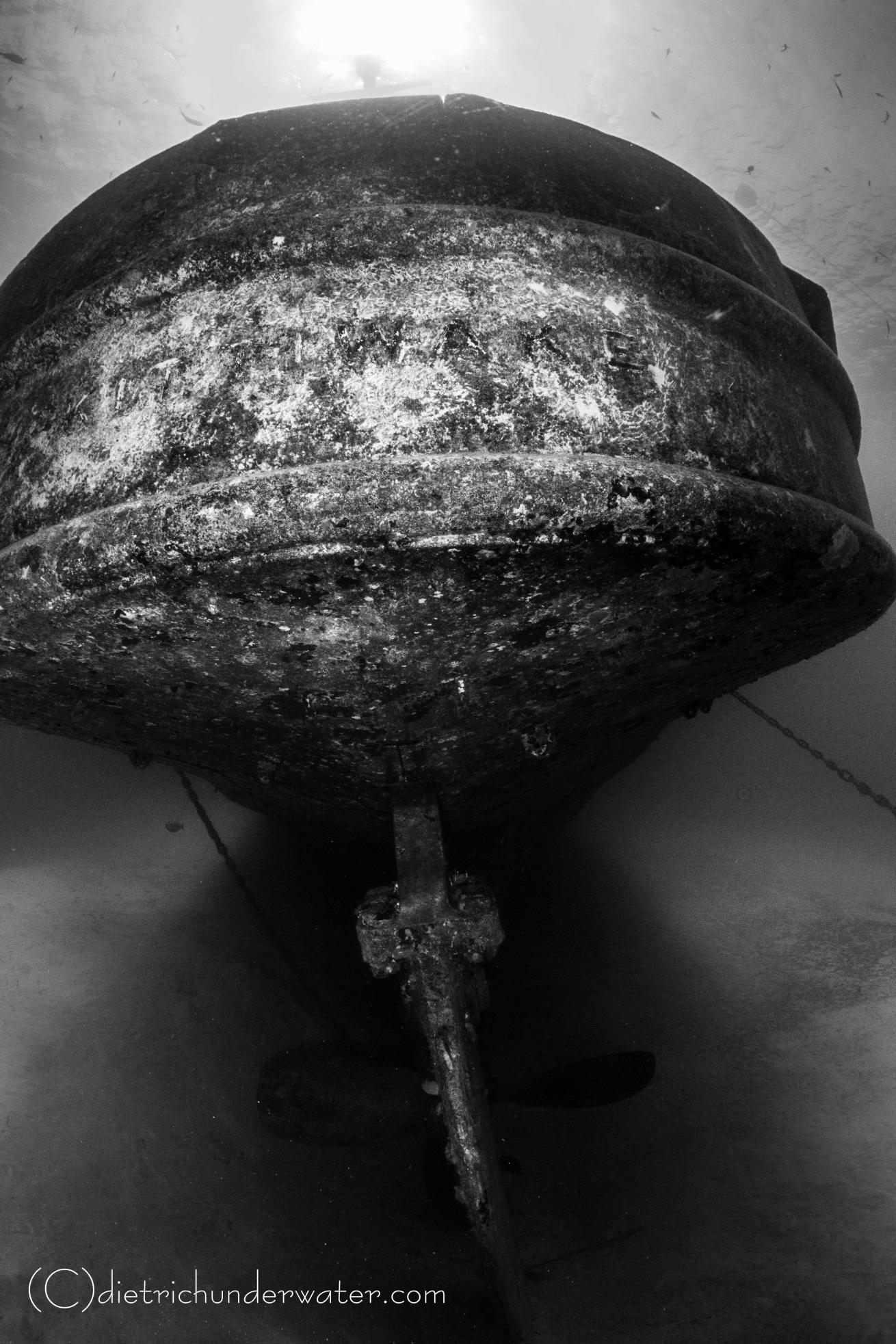
Craig DietrichWrecks can be spectacular photographic subjects. Here, the Kittiwake.
In the “Encyclopedia of Recreational Diving”, there are four “Meccas” of wreck diving recognized: (1) Chuuk (Truk) Lagoon in Micronesia; (2) Scapa Flow, Orkney Islands, Scotland; (3) Outer Banks of North Carolina (also known as the “Graveyard of the Atlantic”); and (4) the Great Lakes. We are truly fortunate to have two of these four “meccas” right here in the United States. Other states — from Alabama to Wisconsin — also boast great wrecks, so chances are there is a site not far from you — all you have to do is jump in and get “wrecked” for yourself!
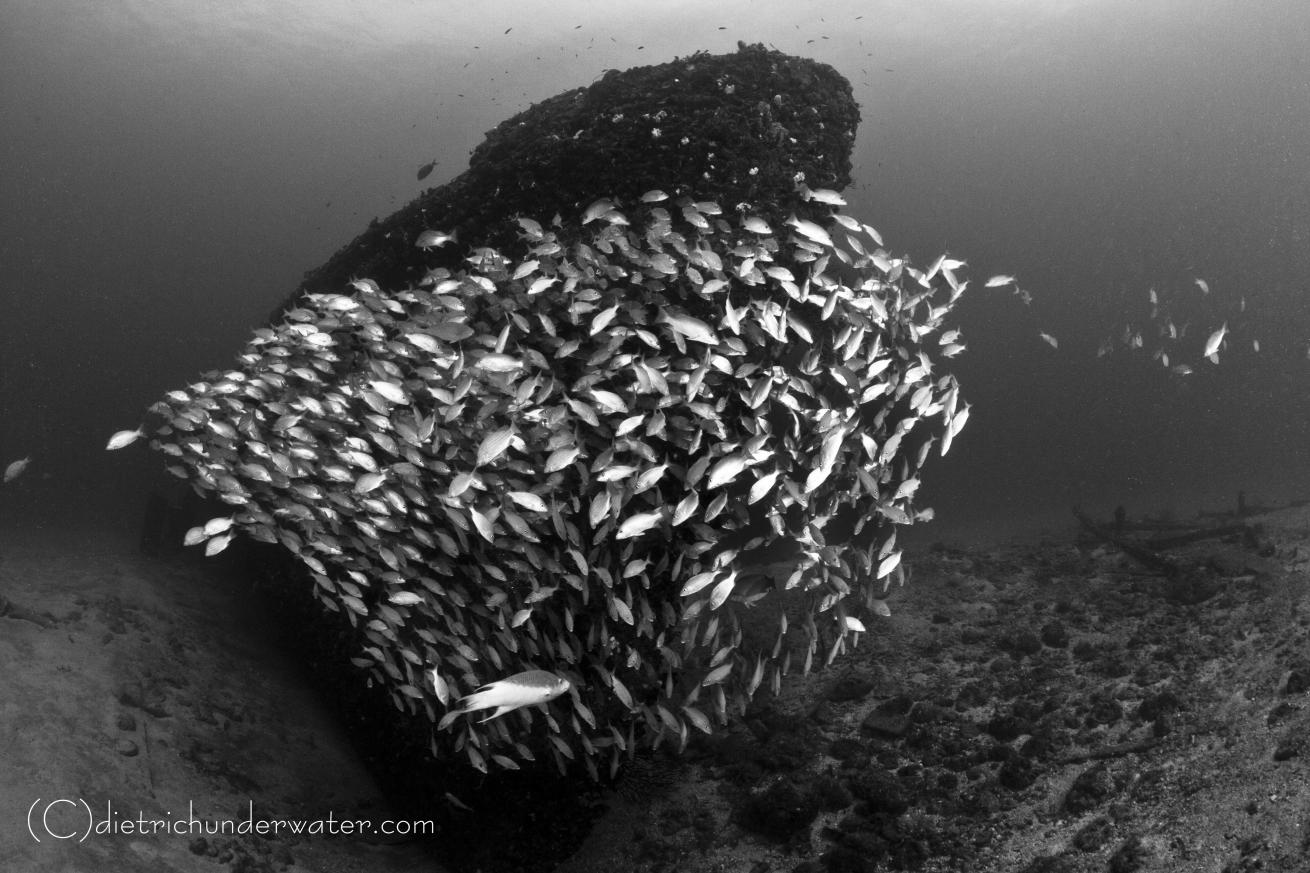
Craig DietrichHuge school of fish on the wreck of the Ancient Mariner in Florida.
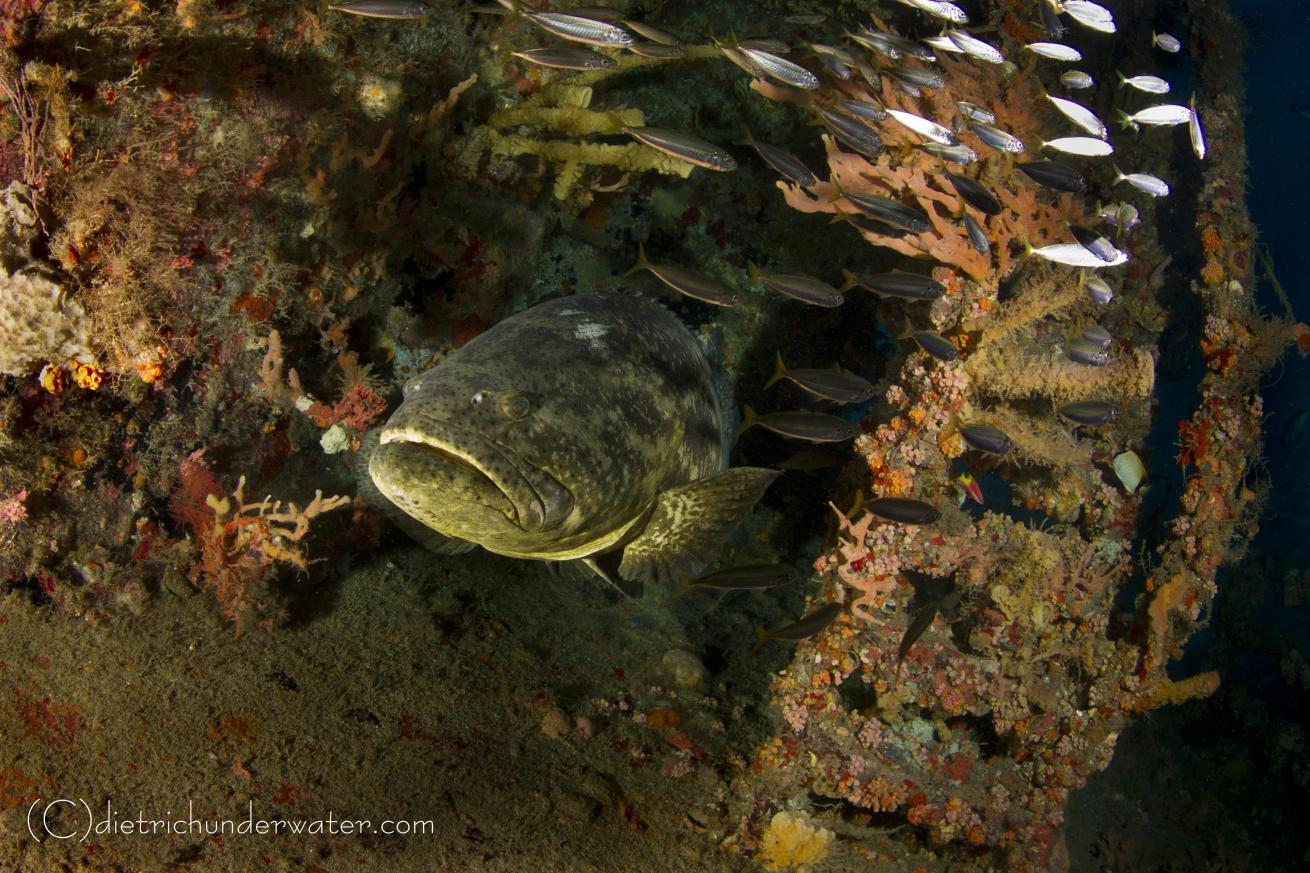
Craig DietrichA grouper nestled in a wreck.
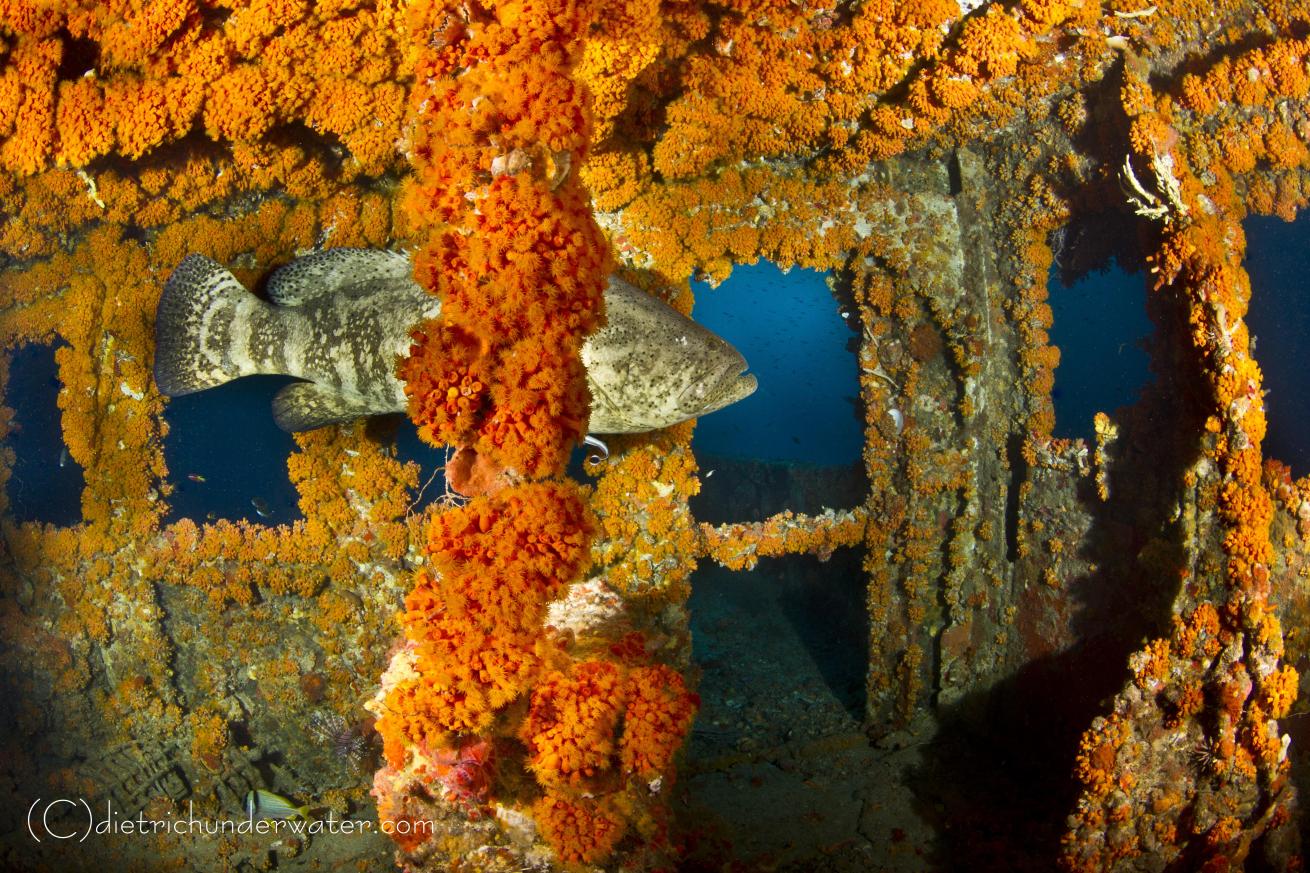
Craig DietrichA goliath grouper swims through a wreck covered in bright coral.
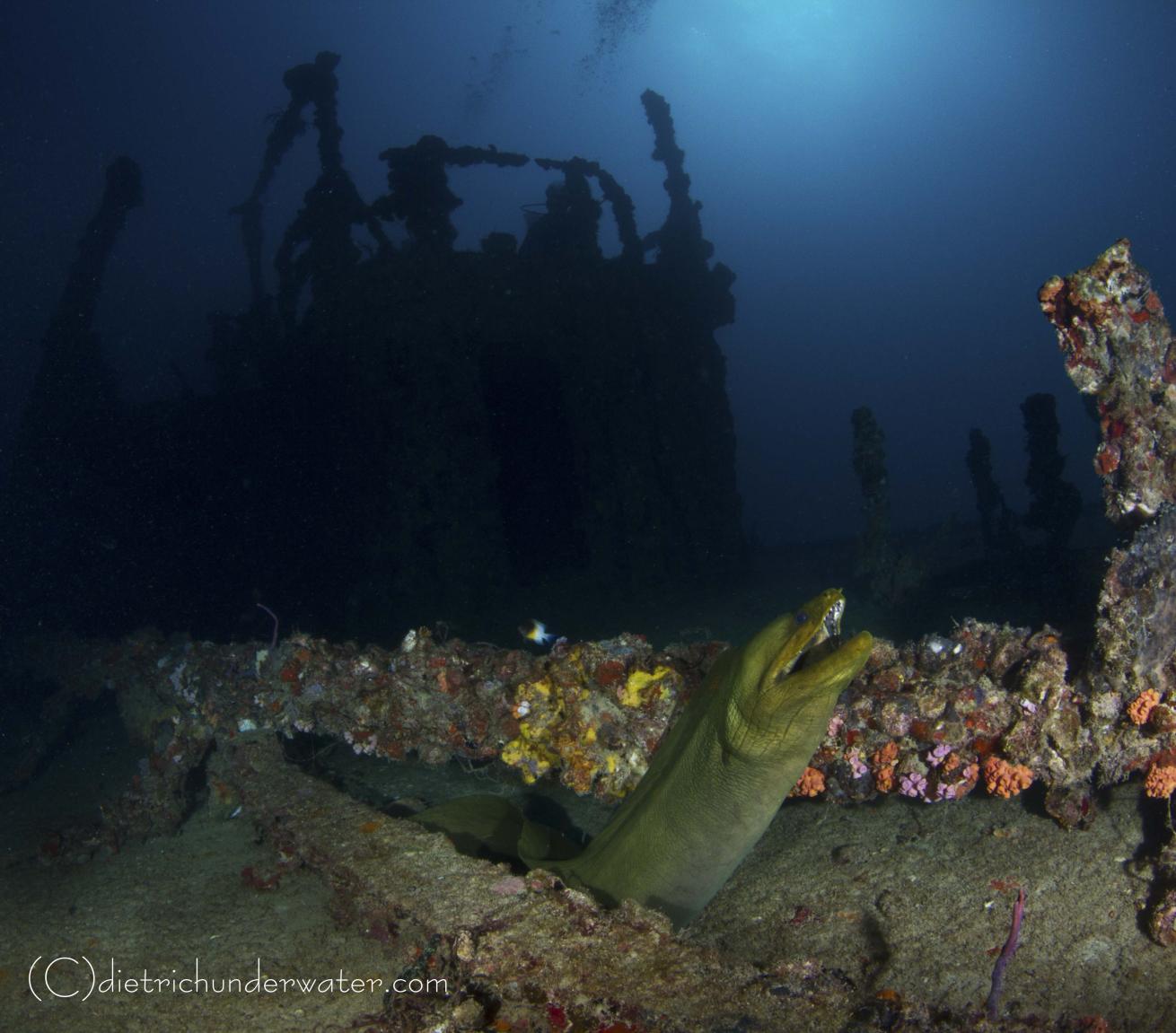
Craig DietrichA moray eel is a resident of this wreck.
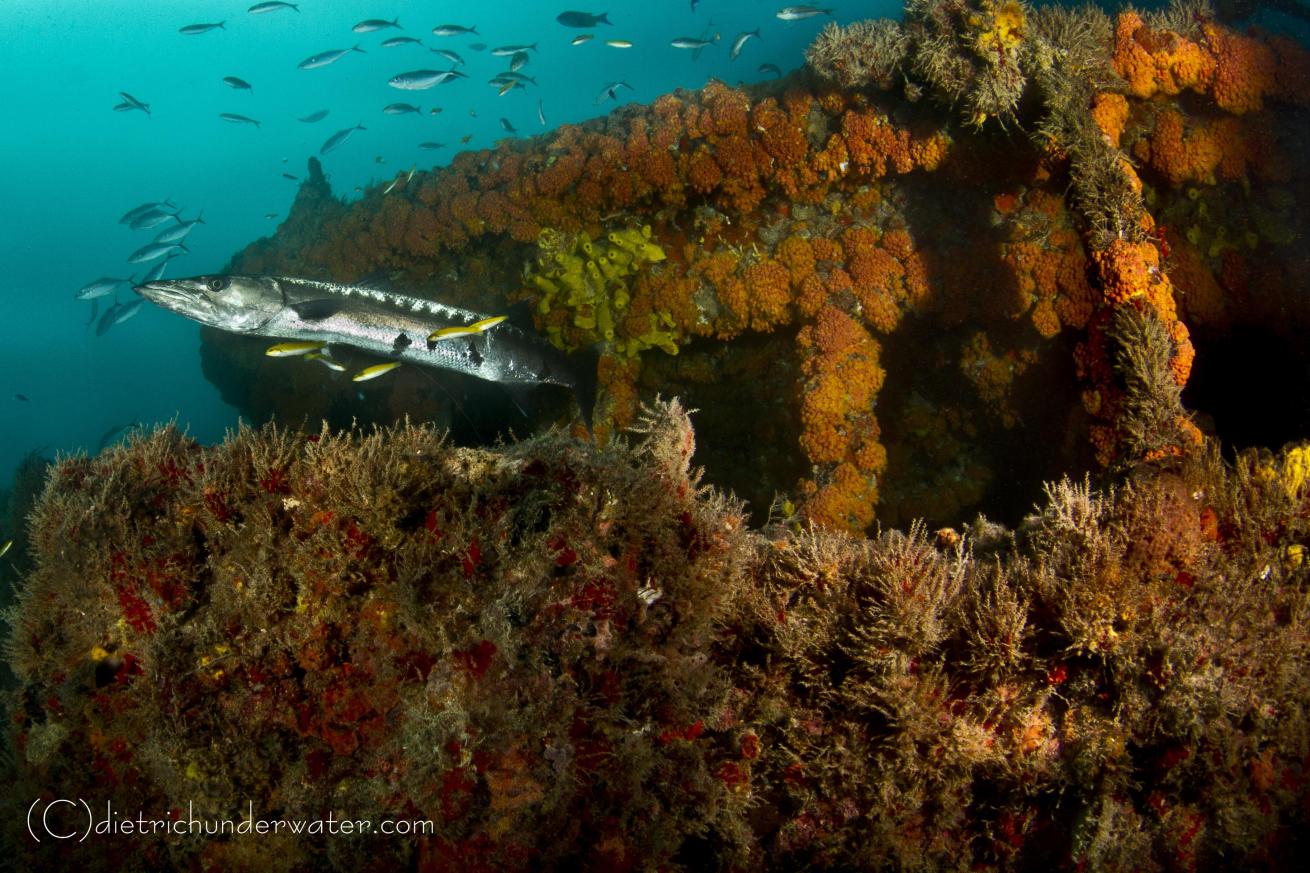
Craig DietrichA barracuda peeks out from a coral-encrusted wheelhouse.
More Underwater Photography from Craig Dietrich:
Scuba Diving with Sea Turtles | Dive Down Under! | The Beauty of Blue Heron Bridge










